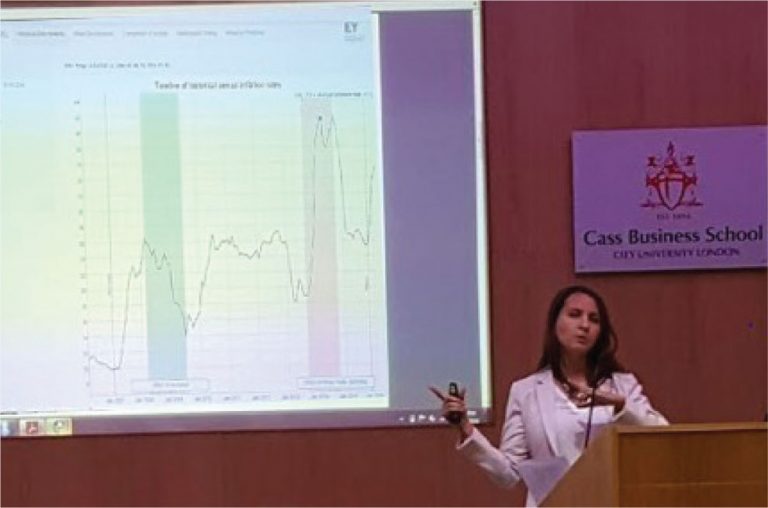
Practitioners and academics met this September in London, England, to learn the latest on loss modeling, reserving and pricing as well as the use of R in a production environment. The global “R in Insurance” Conference focused on applications in insurance and actuarial science that use R, the lingua franca for statistical computation. Dan Murphy, FCAS, from Trinostics, and I represented the CAS and presented our findings.
Widely used by actuaries and scientists, R is an open-source software whose use has also been advocated by industry leaders and clients. With big data taking the center stage, this year’s conference was an ideal venue for practitioners interested in disruptive innovation/statistical techniques. The prestigious Cass University of London hosted the conference, which was developed by a scientific panel that carefully reviewed all submissions and brought together top consulting companies as sponsors.
Given the ever-changing business world, the CAS has put a lot of effort into keeping its members current and encouraging them to broaden their skills beyond the traditional demands of the actuarial market. Recent efforts include the creation of The CAS Institute, which is now is offering the newly created credential Certified Specialist in Predictive Modeling (CSPM), and changes to the CAS syllabus to include more statistical content. Presenting at conferences outside the CAS is another example of how the CAS showcases its members and their value to predictive analytics.
In my presentation, “Modelling the Impact of Reserving in High Inflation Environment,” I focused on Argentina because of the complications arising from that country’s high and changing inflation rate and its reporting methods. My solution to this challenge was a tool, capable of forecasting inflation to a reasonable extent using advanced time-series modeling. I used the inflation forecasts in a sophisticated frequency-severity reserving model to demonstrate the impact on reserves, which are crucial for insurance firms’ survival.
The case study was Argentina Inflation and its leveraged impact on reserves. A time series model was built in R to respond to challenges of inaccurate inflation data and lack of reliability of public resources. The “Billion Prices Project” was researched and used as the input for her R inflation model. The time series analysis modeled the mean of inflation using an ARMA (auto-regressive moving average) model and the volatility using a GARCH (generalized autoregressive conditional heteroscedasticity) model.

In the closing keynote, Dan Murphy discussed his experience on how to provide persuasive actuarial advice to senior management using “The Three Cs”: context, confidence and clarity. As conference organizer Markus Gesmann puts it in “Notes from the 4th R in Insurance Conference,”1 “Context is about articulating the problem in a language senior management can understand … If you have a solution, then you have to deliver it with conviction, because, most importantly is has to be actionable. Clarity, of your actionable insight, ensures that those actions can be delegated to the relevant team/employee by the management without you in the room.”
Murphy is a contributor to the ChainLadder package in R, which provides various statistical methods typically used for the estimation of outstanding claims reserves in general insurance, including those to estimate the claims development results as required under Solvency II. Some of the nontraditional reserving techniques that are available in this package are stochastic techniques (bootstrapping) and modeling (GLMs).
In general, this conference offered great insight into cutting-edge predictive analytics and data visualization techniques through releasing R packages. During coffee breaks and dinner, the presenters and attendees from various many different continents shared insights about challenges faced by the insurance industry and how those challenges tend to be similar in many countries around the world.
Marcela Granados Lavoie, FCAS, is a manager in the advisory practice of Ernst & Young LLP (EY), focusing on predictive analytics in the insurance sector.
1 http://www.magesblog.com/2016/07/notes-from-4th-r-in-insurance-conference.html













